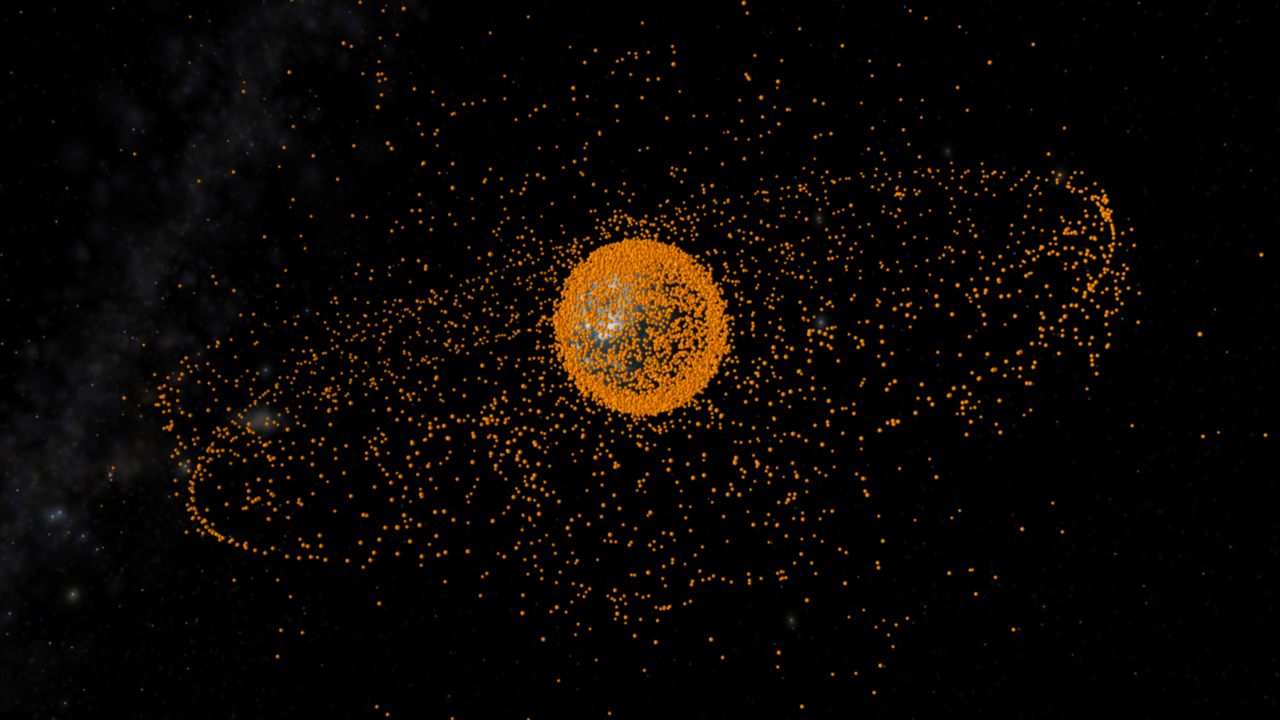The Future of Near-Earth Space
Innovation series
H15:15-19:30
Entrance: via Liguria 20
Innovation series
H15:15-19:30
Entrance: via Liguria 20
International Symposium
The Future of Near-Earth Space. Space Debris and Space Sustainability
As part of the Innovation Series, in collaboration with ETH and EPFL
The conference will be held in English at Istituto Svizzero in Rome and online.
REGISTER IN PRESENCE
To attend in Rome, register here
REGISTER ON ZOOM
To follow online, register here
Istituto Svizzero
Via Liguria 20, Rome
Free entrance
Near-Earth space has become a congested and contested place. It is polluted with millions of human-made objects, ranging from particles of just a few micromillimeters to dysfunctional satellites the size of school buses. All of these polluting objects travel at speeds of several kilometers per second, endangering satellite-based services, the International Space Station, and planned missions alike. It does not seem as if near-Earth space will become less complex any time soon. International agreements are missing or not respected, the orbital realm is undergoing privatization and (re-)militarization, the number of objects in it keeps rising, and a vacuum cleaner for outer space has yet to be introduced. Finding solutions to near-Earth space’s congestion is further complicated by the fact that most human-made objects in near-Earth space cannot be reliably tracked from the ground. This complex situation makes near-Earth space a highly interesting and urgent subject of international research, policy, and public debate.
Istituto Svizzero invites experts from different fields and institutions to a one-day symposium where they share and discuss their professional outlooks on near-Earth space’s potential development until 2050. The goal of the symposium is not only to get scholars from different fields into conversation with each other but also to get more disciplines involved and to translate expert knowledge into public awareness.

PROGRAMME:
Luca Thanei, ETH Zurich
Moderation: Markus Mooslechner, Science journalist
H 15:30-16:45 ― Contextualizing the Future of near-Earth Space
The future of near-Earth space is being shaped on the ground.
This panel looks at the various entanglements between near-Earth space and Earth. It discusses what breakdowns of satellite- based services could mean for research and everyday life, how terrestrial and extraterrestrial sustainability have long become inseparable, and how the pollution in outer space and geopolitics on the ground are shaping each other.
Xiao Shan Yap, EPFL
Claudia Röösli, University of Zurich
Nina Klimburg-Witjes, University of Vienna
― Discussion
― Coffee break
H 17:00-18:15 ― Envisioning the Future of near-Earth Space
What the future of near-Earth space will look like precisely is difficult to (fore-)see. This panel isconcerned with the current capabilities and incapabilities in observing and modeling human-madeobjects in near-Earth space. It discusses how many objects that near-Earth space might be able tocarry, what technologies could help us observe these populations more closely in the coming years, and which blind spots still need to be addressed.
Francesca Letizia, ESA (online)
Michèle Roberta Lavagna, Politecnico di Milano
Elena Vellutini, ASI
― Discussion
H 18:15-19:30 ― Managing the Future of near-Earth Space
There are many different actors concerned with the future of near-Earth space. This panel presents different approaches to how the pollution beyond the atmosphere might be brought under control. It discusses the possibilities of active debris removal, how international dialogue on near-Earth space can be fostered across geopolitical tensions, and how satellite operators might be moved towards greater sustainability.
Emmanuelle David, EPFL
Jérôme Barbier, Paris Peace Forum
Natália Archinard, Federal Department of Foreign Affairs FDFA (online)
― Discussion
― Aperitif
Artist impression of space debris objects in orbit. Debris objects are not to scale ©ESA Space Debris Office